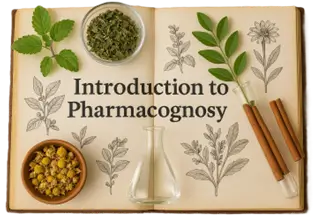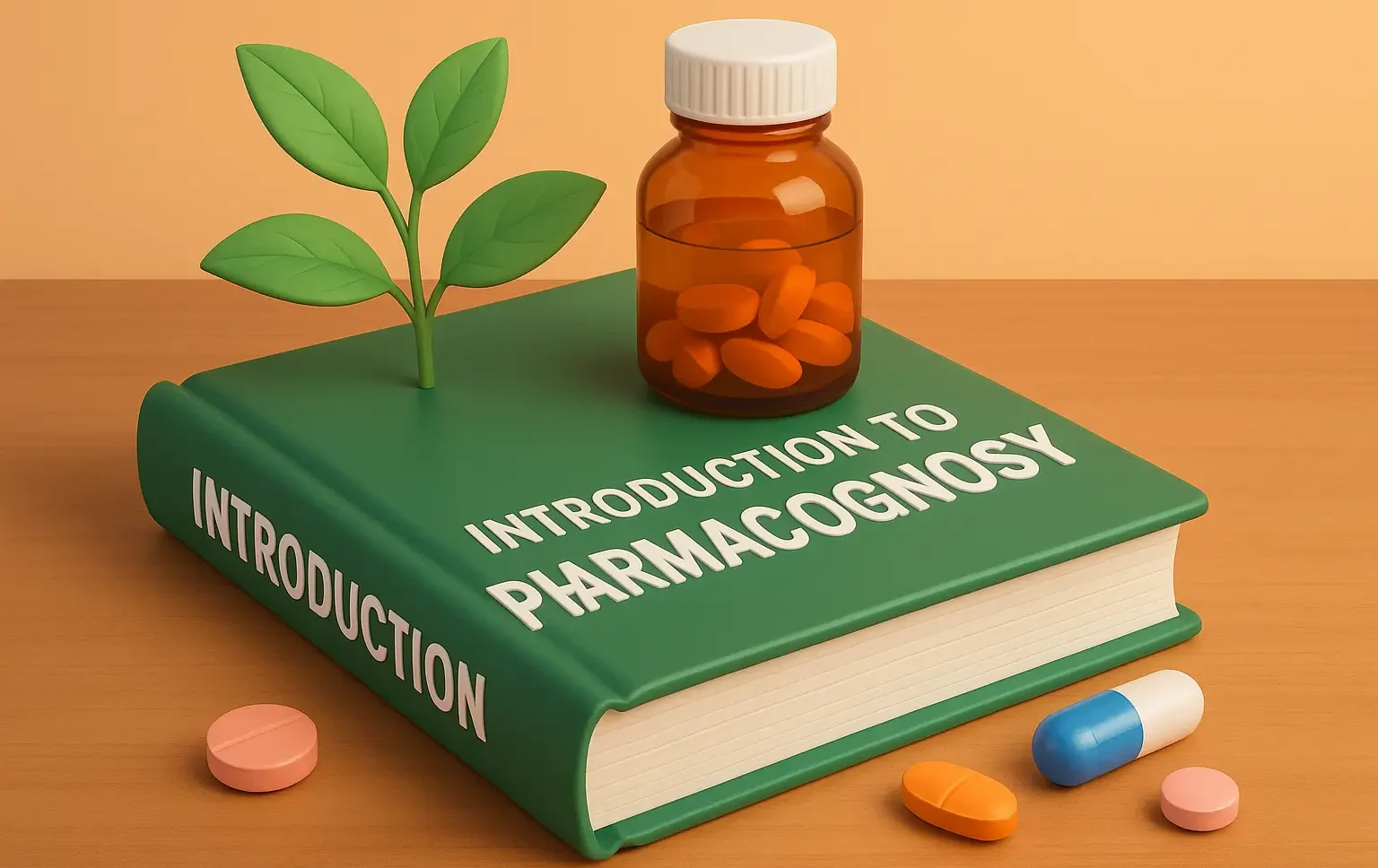- Introduction to Pharmacognosy: Study of drugs from natural sources, their origin, properties, and uses in medicine.
- Importance: Introduction to Pharmacognosy links nature with modern drug discovery for safe, effective treatments.
Definition
- Pharmacognosy:
- The branch of pharmaceutical sciences that deals with the study of drugs of natural origin, encompassing their biological, chemical, biochemical, and physical properties.
- It includes the study of crude drugs derived from plants, animals, microbes, and marine organisms, as well as other natural sources.
- The term originates from two Greek words:
- pharmakon meaning “drug,”
- gnosis meaning “knowledge.”
- Hence, pharmacognosy literally refers to the “knowledge of drugs” (especially those derived from natural sources).

History:
Ancient Civilizations:
- The use of natural products as medicines can be traced back to ancient civilizations like those of Egypt, India (Ayurveda), China (Traditional Chinese Medicine), and Greece.
Advertisements
Early Documentation:
- The Ebers Papyrus (circa 1500 BCE) from Egypt documents hundreds of herbal remedies.
- In India, the Charaka Samhita and Sushruta Samhita describe medicinal plants and formulations.
- Dioscorides, a Greek physician (1st century CE), wrote “De Materia Medica,” a crucial text describing numerous medicinal plants and their uses.
Middle Ages to Renaissance:
- Herbalists and apothecaries in Europe preserved knowledge on medicinal plants through herbals and manuscripts.
- The Renaissance era saw an upsurge in botanical gardens and systematic study of medicinal plants.
Modern Era:
- With advances in chemistry during the 18th and 19th centuries, isolation of active constituents (e.g., morphine from opium, quinine from cinchona bark) began to shape modern pharmacognosy.
- Development of phytochemistry and molecular biology in the 20th century expanded the discipline into the discovery of new drugs from natural sources.
Scope and Development of Pharmacognosy
- Pharmacognosy has evolved to include multiple disciplines, making it a critical area of study in pharmaceutical sciences.
Scope of Pharmacognosy
- Identification and authentication of crude drugs – Recognizing and differentiating medicinal plant materials.
- Isolation of bioactive compounds – Extracting medicinal substances from natural sources.
- Phytochemistry – Studying the chemical composition of plants and their medicinal properties.
- Pharmacological evaluation – Testing natural products for biological activity.
- Biotechnology and tissue culture – Producing medicinal compounds using biotechnology.
- Quality control and standardization – Ensuring purity, potency, and safety of herbal medicines.
- Herbal drug formulation – Developing natural products into pharmaceutical forms.
Advertisements
Development of Pharmacognosy
- Advances in chromatography, spectroscopy, and molecular biology have improved the analysis of natural compounds.
- The increasing demand for herbal medicines and natural products has led to research on sustainable sources and biotechnological production.
- Pharmacognosy plays a role in discovering new drugs, such as antibiotics and anticancer agents from natural sources.

